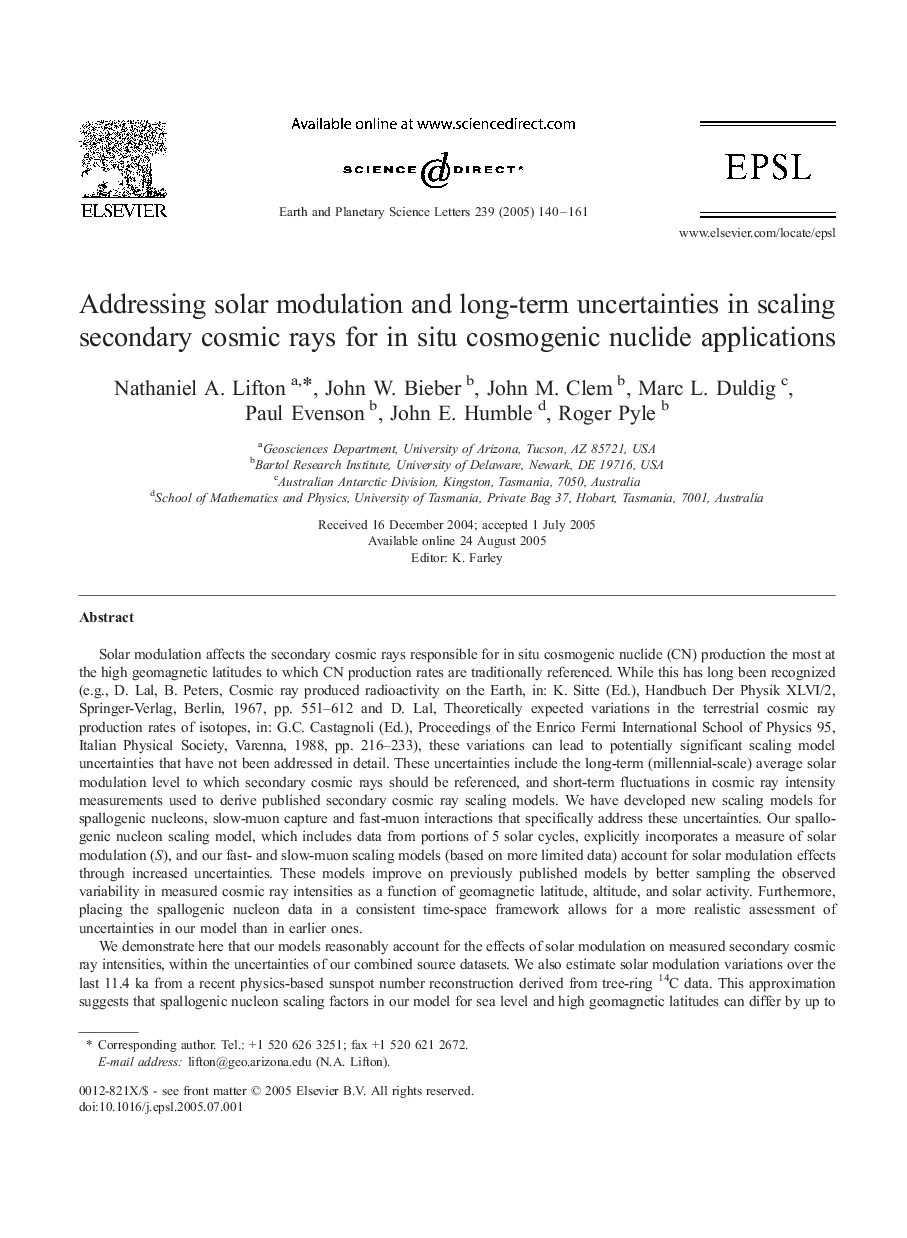| Article ID | Journal | Published Year | Pages | File Type |
|---|---|---|---|---|
| 9522488 | Earth and Planetary Science Letters | 2005 | 22 Pages |
Abstract
We demonstrate here that our models reasonably account for the effects of solar modulation on measured secondary cosmic ray intensities, within the uncertainties of our combined source datasets. We also estimate solar modulation variations over the last 11.4 ka from a recent physics-based sunspot number reconstruction derived from tree-ring 14C data. This approximation suggests that spallogenic nucleon scaling factors in our model for sea level and high geomagnetic latitudes can differ by up to â¼Â 10%, depending on the time step over which the model sunspot numbers are averaged. The potential magnitude of this difference supports our contention that incorporating long-term solar modulation into secondary cosmic ray scaling is important. Although millennial-scale solar modulation clearly requires further study, we believe it is reasonable at present to use our S value record for scaling spallogenic nucleons during the last 11.4 ka, and the weighted mean S value for that period of 0.950 for longer exposure times. By accounting for solar modulation effects on the global variations in nucleon and muon fluxes, these models thus provide a useful framework on which to base CN production rate scaling functions.
Related Topics
Physical Sciences and Engineering
Earth and Planetary Sciences
Earth and Planetary Sciences (General)
Authors
Nathaniel A. Lifton, John W. Bieber, John M. Clem, Marc L. Duldig, Paul Evenson, John E. Humble, Roger Pyle,
